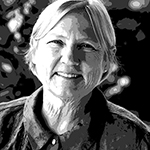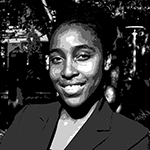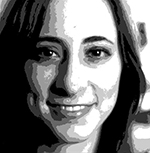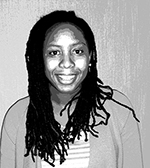Adelphi female physics alumni address current theories and offer solutions regarding the shortage of women in physics and engineering.
 |
| Mary Klement ’71, M.S. ’73, former program manager and proposal leader at Northrop Grumman |
The hit series The Big Bang Theory follows the adventures and misadventures of three physicists and an engineer. All four are highly intelligent, socially inept—and male. The main female cast member is their opposite, a beautiful, socially savvy waitress and aspiring actress whose intellectual pursuits run to pop culture rather than particle accelerators.
While the show can be applauded for bringing nerd culture to the masses, it also reflects that there’s a dearth of women in physics and engineering: According to the American Institute of Physics, women earn just 21 percent of bachelor’s degrees and 17 percent of Ph.D.s in their field, and a 2009 report by the National Science Foundation puts undergraduate female enrollment for engineering at a scant 17.7 percent.
Does The Big Bang Theory reflect a hard fact that physicists and engineers prefer a woman’s role to be that of playing beauty to the guy geeks? Not according to the Adelphi female physics alumni interviewed. Just as The Big Bang evolved to add two woman scientists (one of whom is the only cast member to actually have a Ph.D. in science in real life), our alumni, who have gone on to earn or pursue advanced degrees, are optimistic that women will continue to make inroads in physics and engineering.
 |
| Shantell Adams ’11, M.S. ’13, mechanical engineering, University of Pennsylvania |
Taking a problem-solving approach, we presented these alumnae with some current theories regarding the shortage of women in physics and engineering and asked them to offer possible solutions. The following is an excerpt from their stories.
PROBLEM: Math and science attracts more young boys than girls.
SOLUTION: Encourage girls to explore the sciences, and provide female role models.
In 2005, Lawrence Summers, then president of Harvard University, suggested that the lack of girls pursuing science could be due to neurobiological factors. What followed was a flurry of controversy. Is it enough to steer girls to blocks and construction sets rather than dolls and dress-up? Or do boys possess better mathematical and spatial skills while girls’ brains are wired for language and socialization?
 |
| Alyssa Grieco ’12, M.S. ’14 (anticipated), architectural historic preservation, Columbia University. |
There is no lack of analytical abilities in our physics alumnae. Even as little girls you could find them fixing cars, solving puzzles or taking apart locks and mechanical devices. By high school, they’d already excelled in math and science and were hooked on using their skills to come up with innovative ways to solve problems.
“We need to encourage girls, and get them while they’re young,” Mary Klement ’71, M.S. ’73, said. One way to do this is to bring female engineers—like herself—into the schools to show girls what engineers and physicists do. She tells about the time she spoke to high school students about her career at Northrop Grumman and her work as program manager for such projects as the Global Hawk, a highly sophisticated intelligence-surveillance-reconnaissance unmanned air vehicle. After her talk, the young women lined up to get her autograph.
 |
| Malika Grayson ’11, M.S. ’14 (anticipated), Ph.D. ’15, (anticipated), mechanical engineering, Cornell University |
Malika Grayson ’11 is researching variable blade geometry to optimize wind power so that it can be obtained at lower speeds. Pamela Kambanis ’12 is interested in structural engineering projects such as large-scale bridges and buildings. Shantell Adams ’11 would like to focus on energy storage and renewable energy.
 |
| Pamela Kambanis ’12, B.S. ’13, civil engineering, Columbia University |
All three point out that girls—and all students, for that matter—may be inspired by how science can benefit humanity. Ms Adams calls it “engineering a better world” and hopes her degree concentration in heat transfer into harnessing solar, wind and tidal energy to decrease dependence on nonrenewable sources.
Students may also be intrigued with how science can be applied to the arts. Alyssa Grieco ’12 said that her physics background has proven to be “incredibly helpful” in her master’s program in in architectural historic preservation and that her classmates often turn to her for advice on construction or materials.
Read the rest of the article. (PDF 227KB)
For further information, please contact:
Todd Wilson
Strategic Communications Director
p – 516.237.8634
e – twilson@adelphi.edu